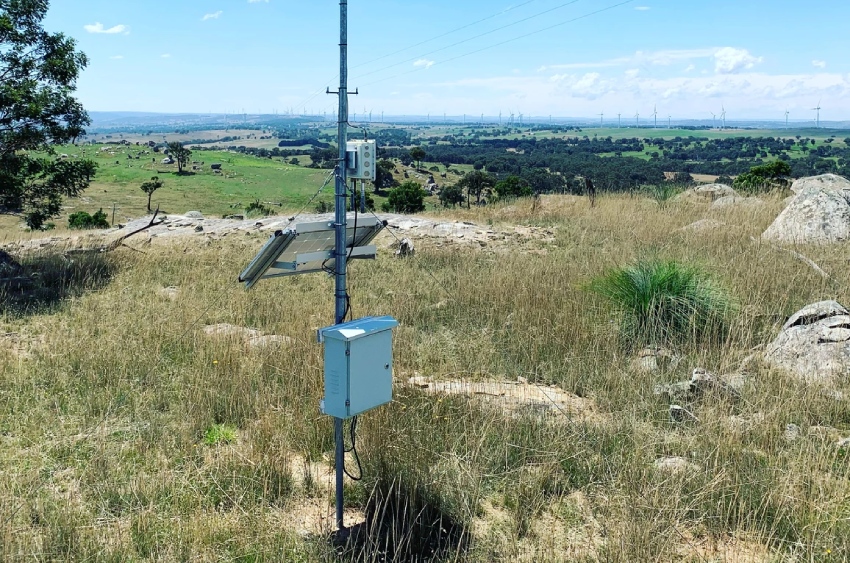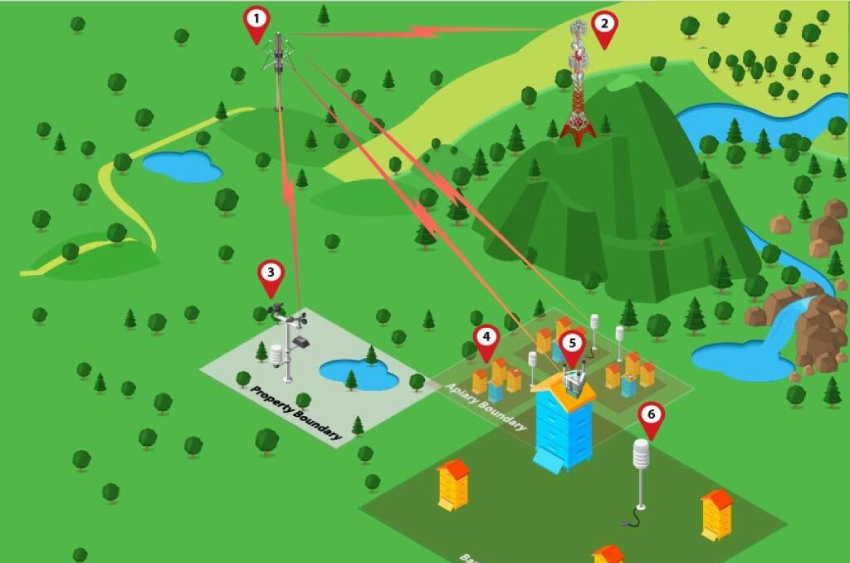The following sections provide further details on the technologies we use. These technologies are mature and sufficiently robust to make sense to a small operation.
Australia’s telecommunications carriers are proud that they have “coverage” out to 99+ % of Australians. Unfortunately, as anyone who lives or works in remote areas will tell you, rural telecommunication is patchy at best. Telecommunications services – especially those moving data – are either unlikely to be available or don’t have the capacity in the locations where you are working.
LoRa (Low power, long Range) is a radio technology that uses license free frequency bands to enable inexpensive devices to communicate over long distances for protracted periods of time with little maintenance. The Things Network (TTN) is an open-source movement that implements a version of LoRa (known as LoRaWAN) that promotes the adoption of LoRa world-wide. LoRaWAN uses a central gateway to connect thousands of devices to efficiently capture data and send it to the Internet through as low a cost backhaul as is available. This means that devices don’t require costly communications interfaces.

A Typical LoraWAN Gateway
The adjacent picture shows a typical LoRaWAN gateway supporting communications as far out as 10-15 kilometres, this technology allows a lot of flexibility with locating sensors and getting this data back to where you can interpret it. It’s been around for many years, relatively inexpensive and is well suited to rural and remote locations.
The illustration below provides an example of how we use this technology for one of our own business – Odd Acres Apiary. Odd Acres Apiary locates its beehives throughout the south-east NSW and Victoria.
In the following diagram :

The remaining components in the above diagram represent various sensors that monitor the environment of the apiary site and the colonies. The weather station (Component 3) is Meter’s ATMOS 41 all in one weather station.
This is configured with a LoRaWAN compatible communications node and captures the immediate climatology around the apiary location. Without the weather station the closest information is only available from the Australian Bureau of Meterology’s facilities usually from a location that is so distant from the apiary as to be irrelevant. Sensors and data loggers capture hive temperatures, humidity and bee counts and are assembled using sensors and data loggers from manufacturers like Digital Matter, and Definium.
Get In Touch with me.

